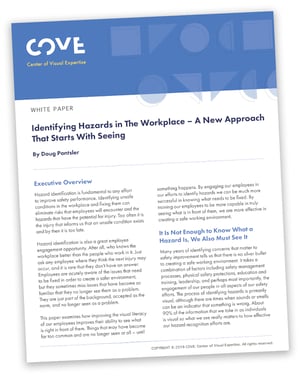Hazard identification is fundamental to any effort to improve safety performance. Identifying unsafe conditions in the workplace and fixing them can eliminate risks that employees will encounter and the hazards that have the potential for injury. Too often it is the injury that informs us that an unsafe condition exists and by then it is too late.

Hazard identification is also a great employee engagement opportunity. After all, who knows the workplace better than the people who work in it. Just ask any employee where they think the next injury may occur, and it is rare that they don’t have an answer. Employees are acutely aware of the issues that need to be fixed in order to create a safer environment, but they sometimes miss issues that have become so familiar that they no longer see them as a problem. They are just part of the background, accepted as the norm and no longer seen.
This paper examines how improving the visual literacy of our employees improves their ability to see what is right in front of them. Things that may have become far too common and are no longer seen – until something happens. By engaging our employees in our efforts to identify hazards we can be much more successful in knowing what needs to be fixed.
By training our employees to be more capable in truly seeing what is in front of them, we are more effective in creating a safe working environment.
Learning Objectives